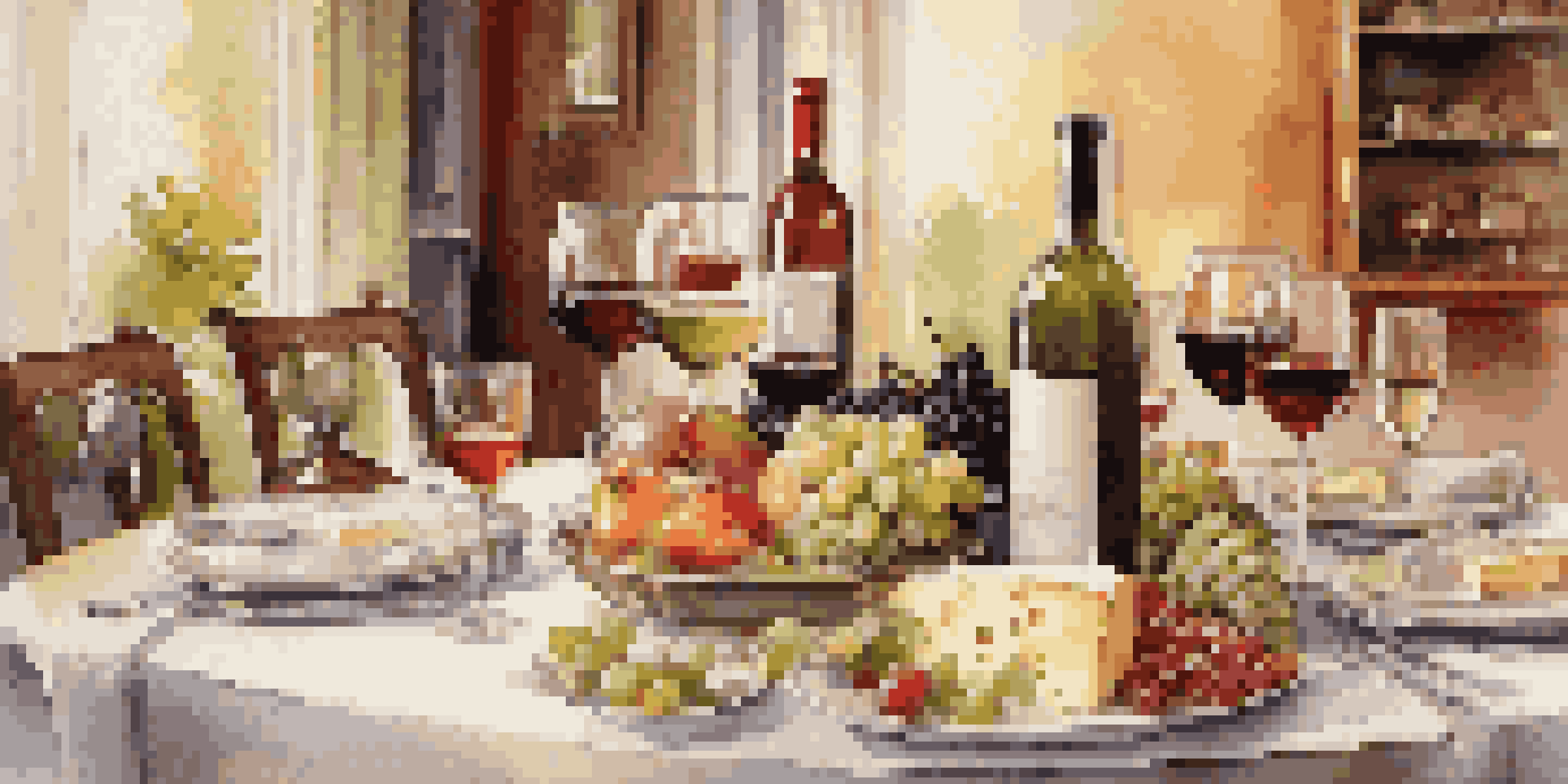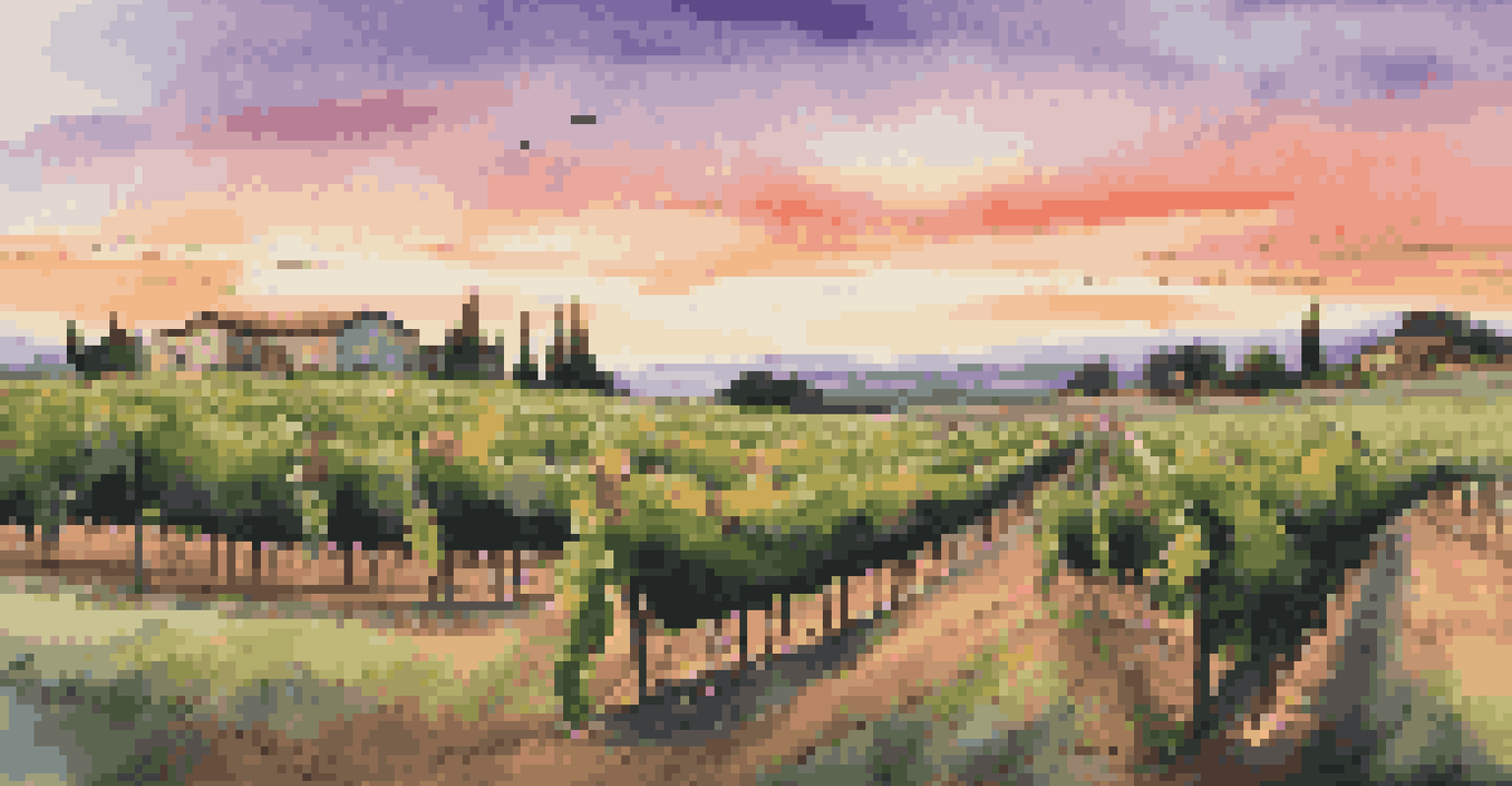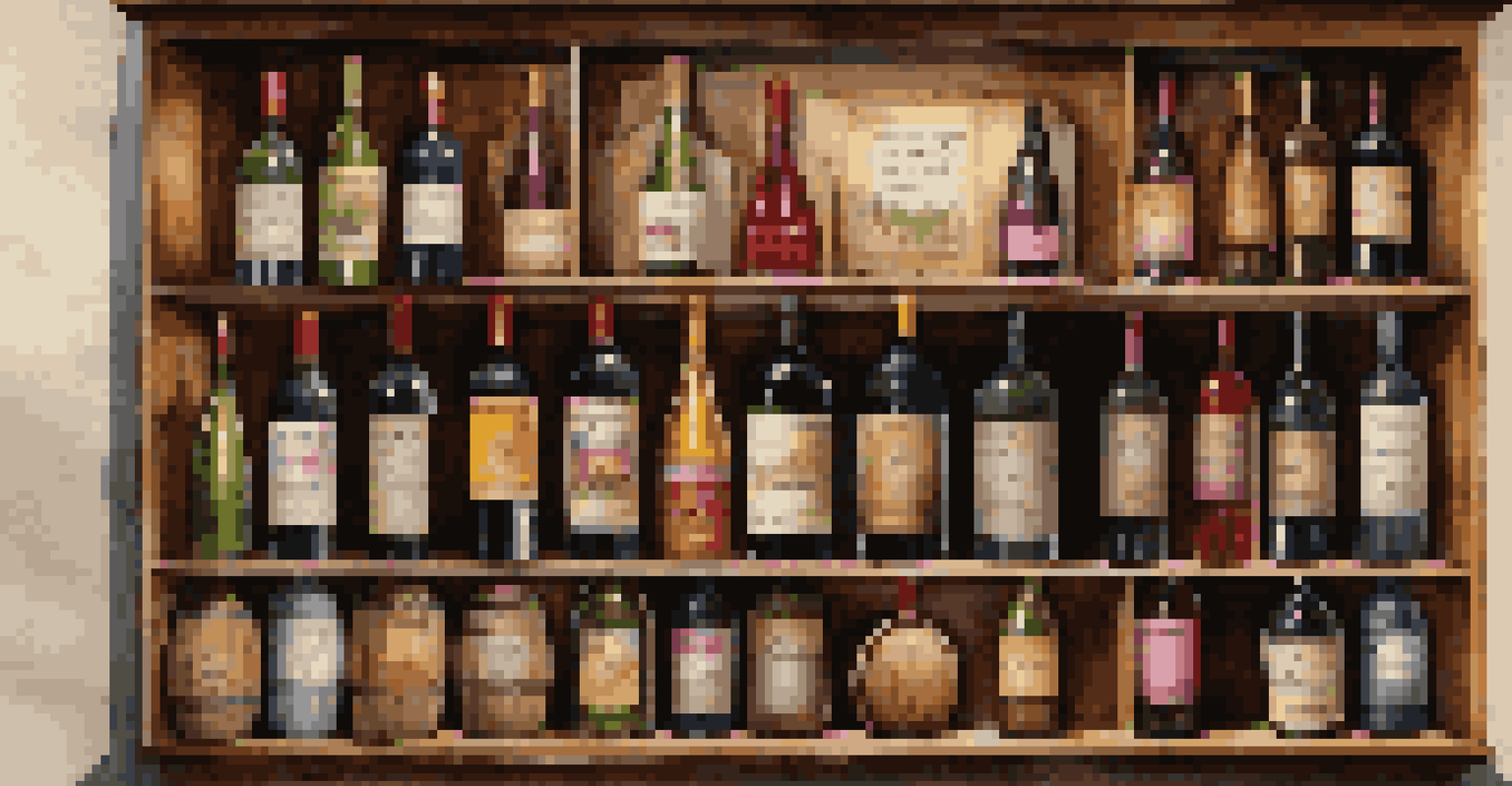How to Select the Perfect Wine for Your Dinner Party

Understanding the Basics of Wine Types
Wine comes in various types, primarily red, white, and rosé. Each type has its unique characteristics and flavor profiles, so understanding these basics is crucial. For instance, red wines are typically bolder and pair well with hearty dishes, while whites are often lighter and complement seafood or chicken.
Wine is sunlight, held together by water.
Consider sparkling wines as well, like Champagne or Prosecco, which can add a celebratory touch to your gathering. Each choice can set the tone for the meal and enhance the overall dining experience. Remember, the right wine can elevate a simple dinner into a memorable occasion.
When selecting wine, think about the preferences of your guests too. Some may prefer sweeter wines, while others lean toward drier options. Knowing these preferences can help you choose a wine that everyone will enjoy.
Pairing Wine with Your Menu
When it comes to food and wine pairing, the goal is to create harmony between the flavors. A classic rule of thumb is to pair white wines with lighter dishes like fish or chicken and red wines with richer meats like beef or lamb. This balance can enhance both the food and the wine, making each bite and sip more enjoyable.

For example, if you're serving a creamy pasta dish, a Chardonnay can complement the richness perfectly. On the other hand, a zesty Sauvignon Blanc might pair wonderfully with a fresh salad. Experimenting with different pairings can be a fun part of the dinner party planning process.
Know Your Wine Types
Understanding the differences between red, white, rosé, and sparkling wines is essential for enhancing your dining experience.
Don’t forget about the seasoning! A dish with bold spices might require a wine that can stand up to those flavors. Don't hesitate to seek out recommendations or do a little research on wine pairings specific to your menu.
Considering the Occasion and Atmosphere
The vibe of your dinner party plays a significant role in your wine selection. A casual gathering may call for a more laid-back wine choice, such as a fruity rosé or a refreshing white. Conversely, a formal dinner might warrant a more sophisticated red or a vintage bottle to impress your guests.
In wine, there's truth.
Think about the setting as well—outdoor BBQs often pair best with lighter wines that are easy to sip and enjoy, while a cozy indoor dinner might benefit from richer, full-bodied wines. Creating an atmosphere that complements your wine choice will enhance the overall experience.
Remember, the occasion influences not just the food and wine but also how guests interact. A light, bubbly wine could spark conversation and laughter, while a robust red could lead to deeper discussions about the flavors and pairings.
Budgeting for Your Wine Selection
Wine comes in a range of prices, and finding the right balance between quality and budget is essential. You don’t have to break the bank to find a great wine; there are many excellent bottles available at reasonable prices. Setting a budget beforehand can help narrow down your options and make the selection process less overwhelming.
If you're unsure where to start, consider looking for wines from lesser-known regions, as they often provide great value. For example, a delicious Malbec from Argentina may be more affordable than a similar varietal from a more famous region like Bordeaux.
Pair Wisely with Food
Creating harmony between wine and food by matching flavors can elevate both the meal and the wine.
Additionally, buying in bulk can sometimes save you money. If you're hosting a larger gathering, purchasing a few cases of the same wine can help you stay within your budget while ensuring everyone has enough to enjoy.
Exploring Local Wines and Vineyards
If you're looking to add a unique touch to your dinner party, consider exploring local wines from nearby vineyards. Many regions have hidden gems that can add a personal touch to your gathering. Supporting local wineries not only boosts your community but also gives your guests a taste of the local terroir.
Visiting a vineyard can also be a fun outing before your dinner party. Many offer tastings and tours that can help you select the perfect bottles for your event. Plus, you may discover new favorites that you wouldn’t find in a store.
Don’t shy away from asking for recommendations from local wine experts or sommeliers. They can provide insights into which wines pair best with your intended menu, ensuring a thoughtful selection.
Serving Temperature: The Key to Enjoyment
Serving wine at the correct temperature can significantly enhance its flavor and aroma. Generally, white wines are best served chilled, while red wines are often better at room temperature. A simple rule of thumb is to chill whites in the fridge for about two hours before serving and let reds sit at room temperature for a bit before pouring.
For sparkling wines, a good chill is essential to maintain their effervescence. If you want to impress your guests, consider serving wines at the perfect temperature to enhance their flavor profiles. The right temperature can make the difference between a good wine experience and a great one.
Serve at the Right Temperature
Serving wine at the correct temperature is crucial for maximizing its flavor and aroma, making the experience more enjoyable.
If you're unsure about the best temperature for a specific wine, many wine shops and online resources can provide guidance. Knowing these nuances can elevate your dinner party from ordinary to extraordinary.
Tasting Notes and Wine Labels Explained
Understanding wine labels and tasting notes can demystify the selection process. Wine labels often include helpful information such as the varietal, region, and vintage year. Familiarizing yourself with this terminology can help you make informed choices when shopping for wine.
Tasting notes can provide insights into the flavors and aromas you might expect from a particular wine. For example, a wine described as having 'notes of cherry and oak' suggests a fruity yet complex profile that might pair beautifully with a roasted dish.

Don't hesitate to ask staff at your local wine shop for their recommendations based on tasting notes. They can guide you toward wines that align with your menu and personal preferences, making the selection process smoother.